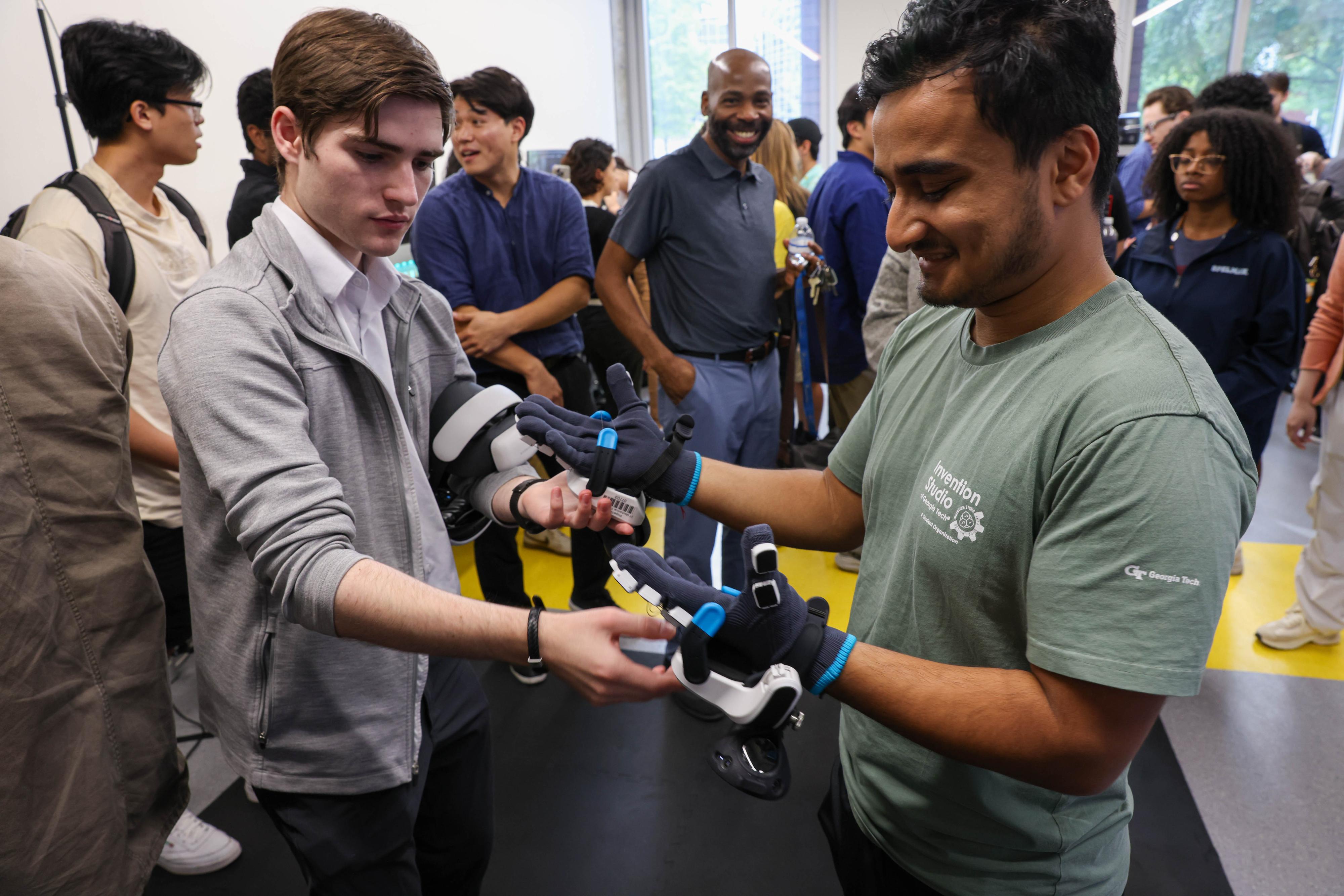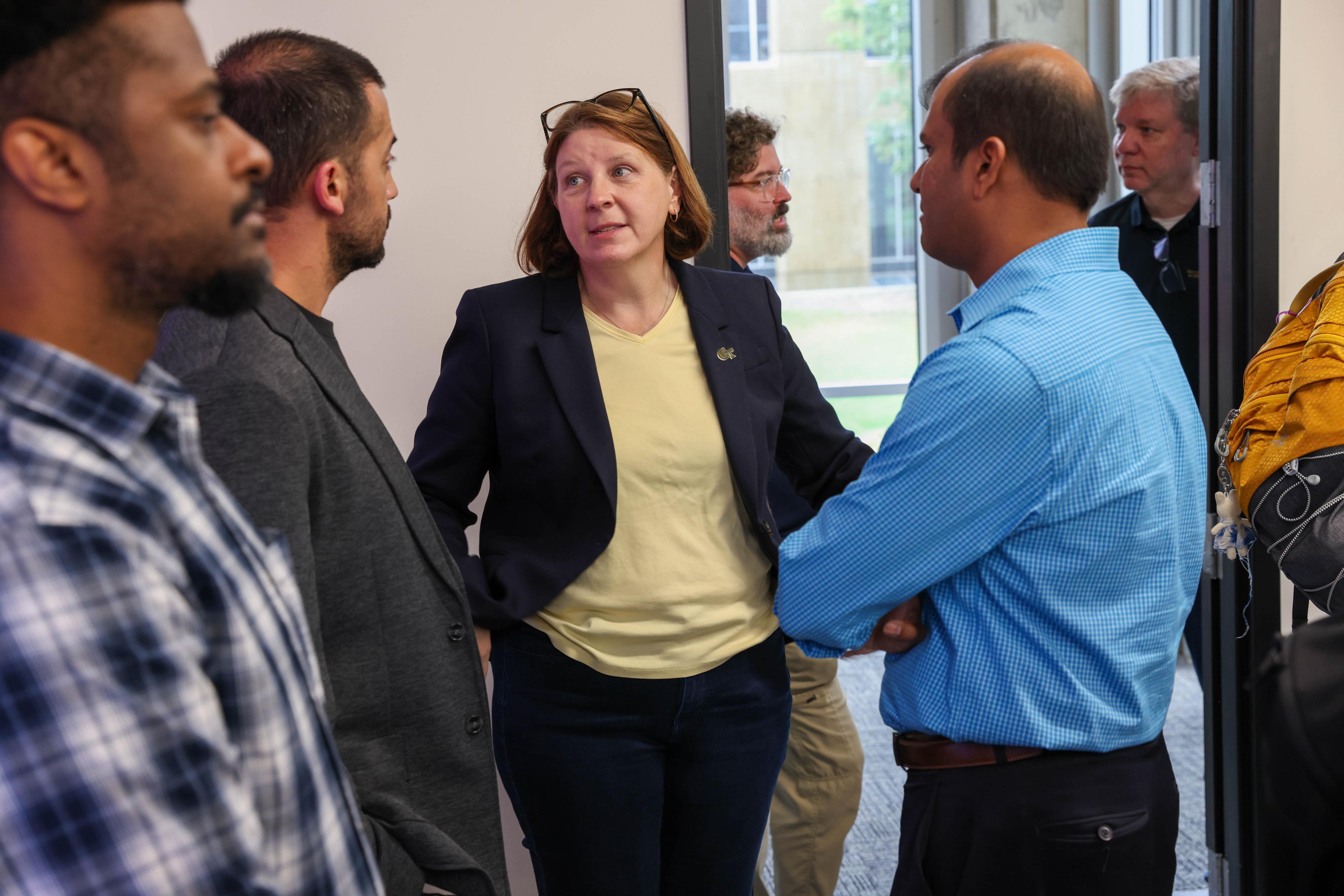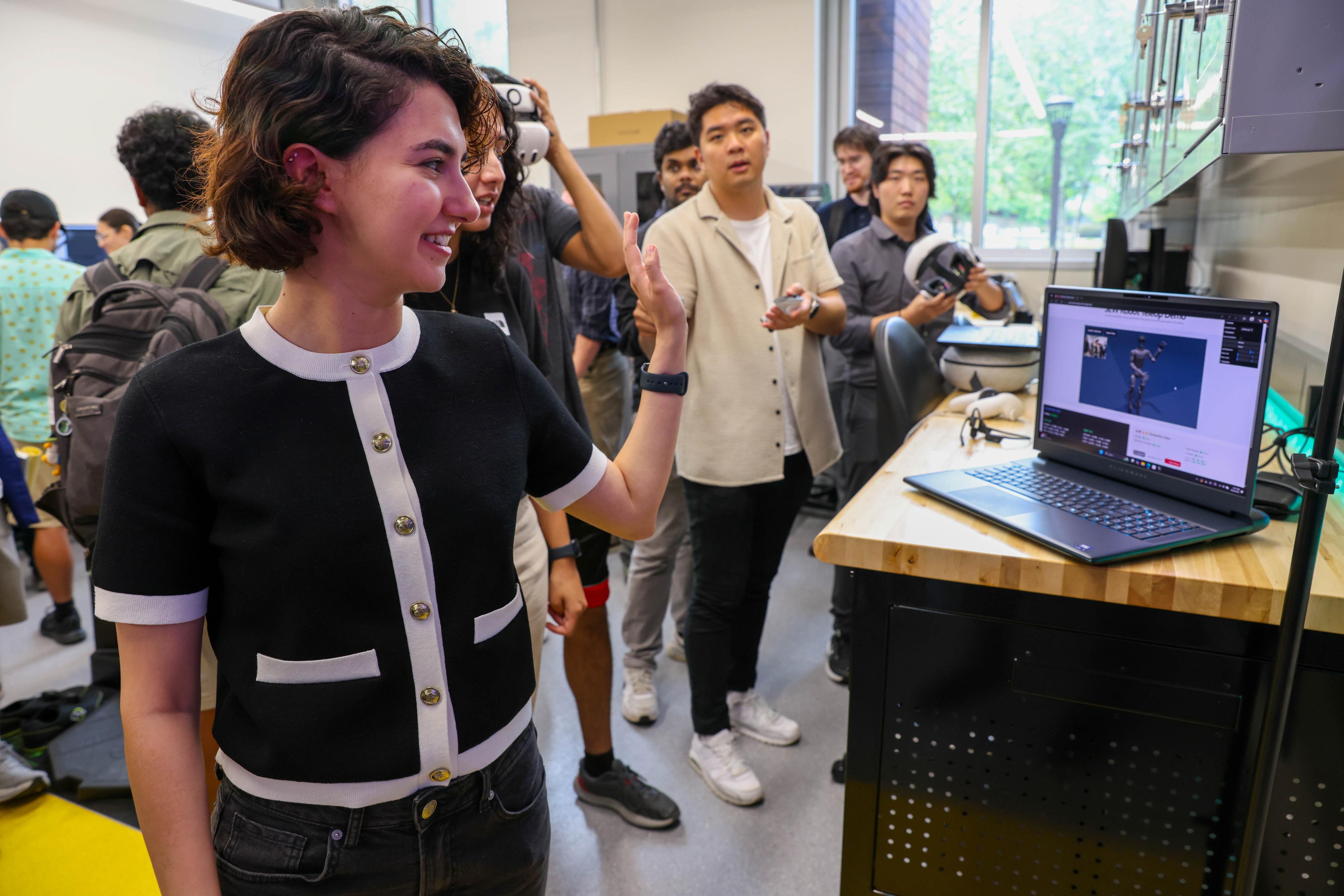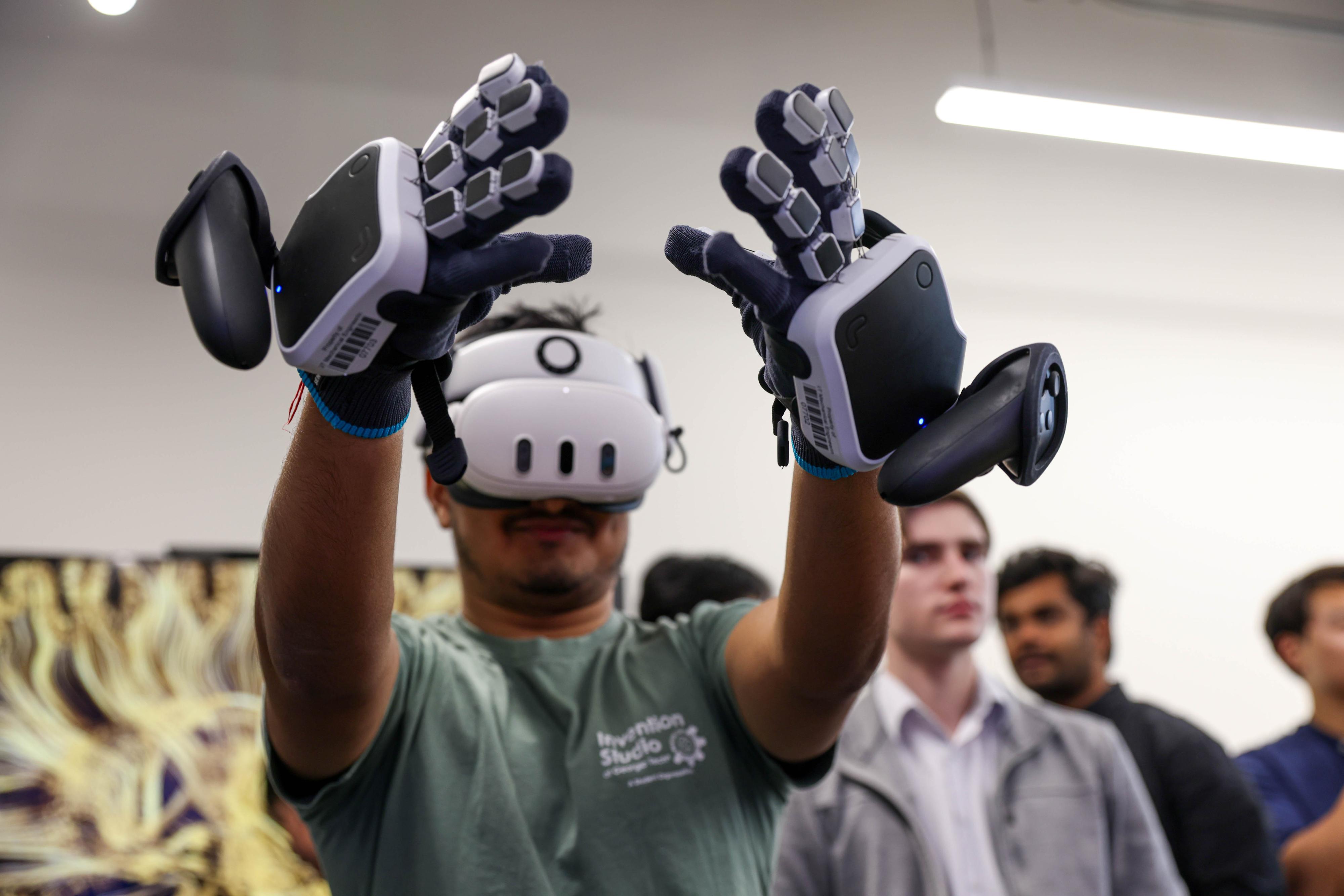
XR Takes Center Stage at Woodruff School’s TechMade Symposium
October 24, 2025
By Tracie Troha
It was standing room only at the George W. Woodruff School of Mechanical Engineering’s TechMade Symposium: XR in Design and Manufacturing, where students, faculty and community visitors gathered to learn how extended reality (XR) technologies are shaping the future of design, manufacturing and research. The event also marked the debut of the newly renovated XR makerspace in the Flowers Invention Studio.
The symposium, held in September, opened with a welcome from Woodruff School Professor Carolyn Seepersad, followed by a series of presentations from graduate students who showcased their cutting-edge work in XR applications.
Austin Graves, a robotics Ph.D. student and XR Master for the Invention Studio, and Clint Rinehart, a Woodruff School mechanical engineer, kicked off the talks with an overview of XR hardware, software capabilities and available resources. Their presentation set the stage for how immersive technologies are being used in research and education at Georgia Tech.
Next, mechanical engineering Ph.D. student Parisa Ghasemi discussed her research on using XR to simulate visual impairments. She demonstrated how a virtual reality headset can be used to help designers experience the world through the eyes of someone with a visual impairment, thereby supporting universal design and accessibility in product development.
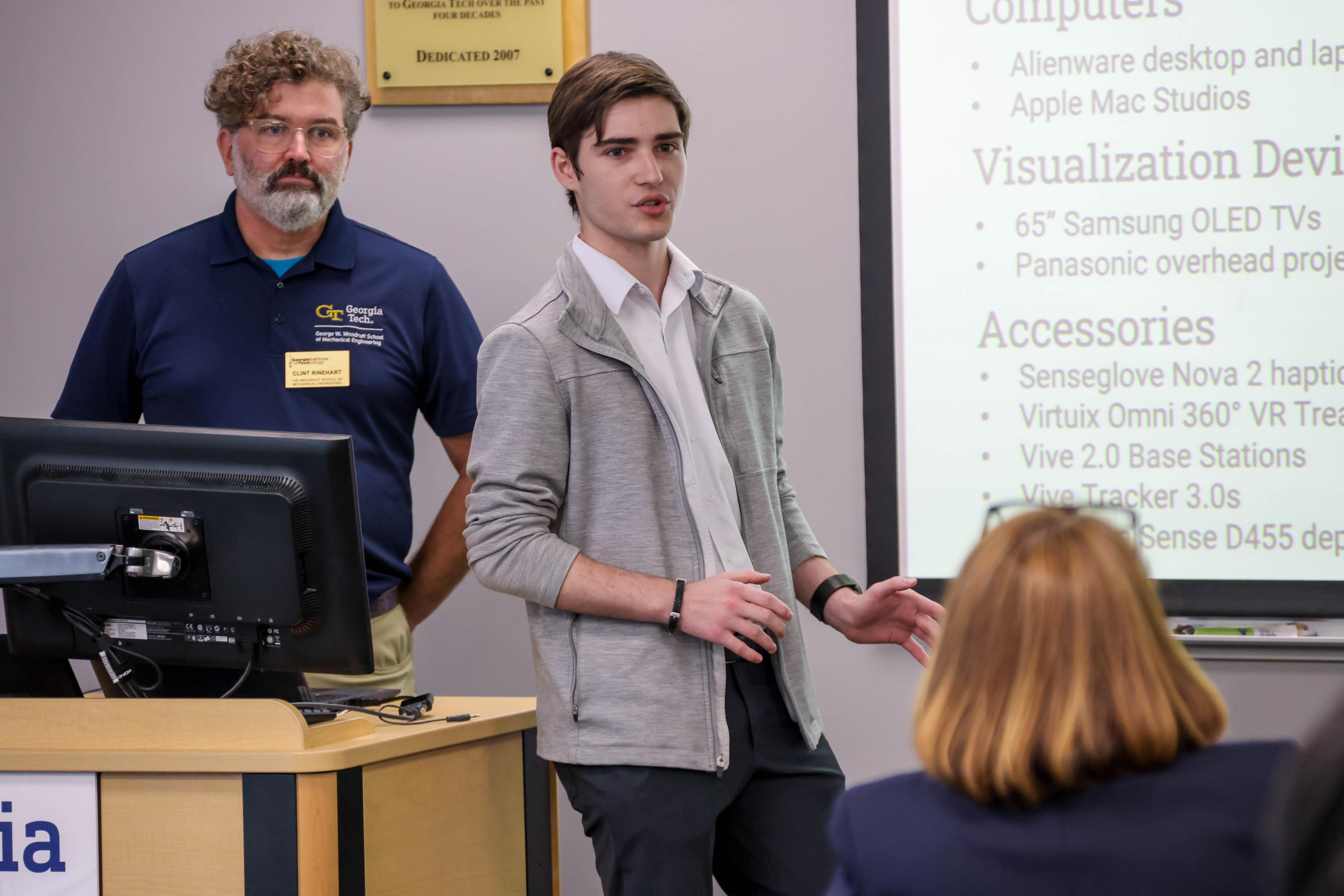
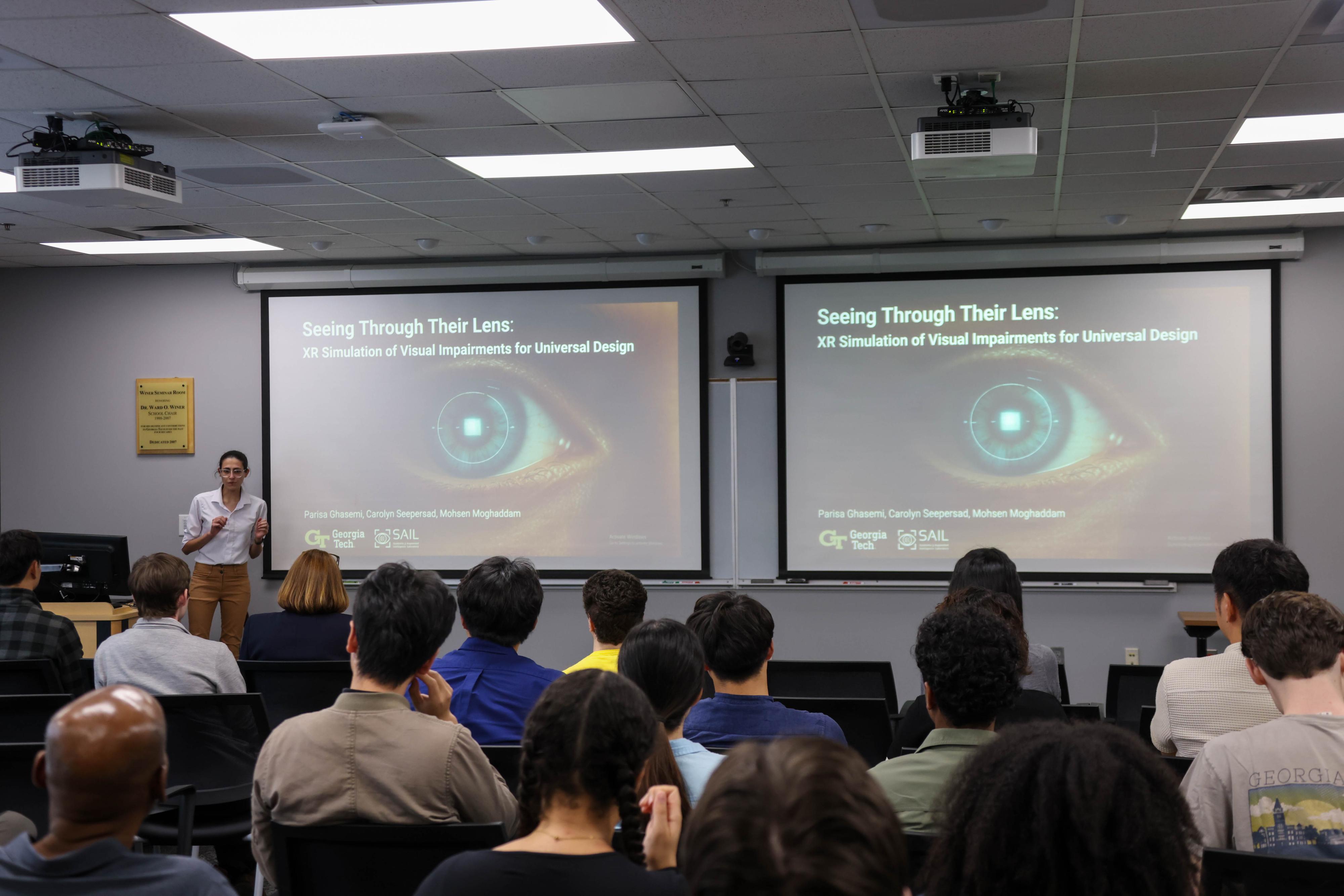
Robotics Ph.D. student Ryan Casey followed with a presentation on how XR can support physical therapy. He demonstrated how virtual avatars can help individuals visualize the stresses placed on their joints during physical activity, helping them to prevent injury.
Another robotics Ph.D. student, Chuizheng Kong, shared his work on XR on teleoperation of robots, which maps human movements to robots. Kong demonstrated a virtual robot that mimics a user’s movements in real time.
Speakers from the College of Design also contributed to the symposium, presenting research on human–machine interaction within virtual environments, particularly how XR can be used to evaluate car cockpits.
“They are researching how to design and create virtual experiences that allow customers and designers to experience what the cockpit is like,” Seepersad said.
The symposium concluded with an open house of the XR makerspace, located on the third floor of the Manufacturing Related Disciplines Complex (MRDC). The space, which opened in early September, provides access to cutting-edge XR tools for design, simulation, and prototyping.
Seepersad said the turnout far exceeded expectations.
“When we invited attendees to tour the XR space, it was not just standing room only—it couldn’t accommodate everyone inside. People were even gathered in the hallway,” she said. “It was really well received, and a lot of folks stuck around and spent some time there.”
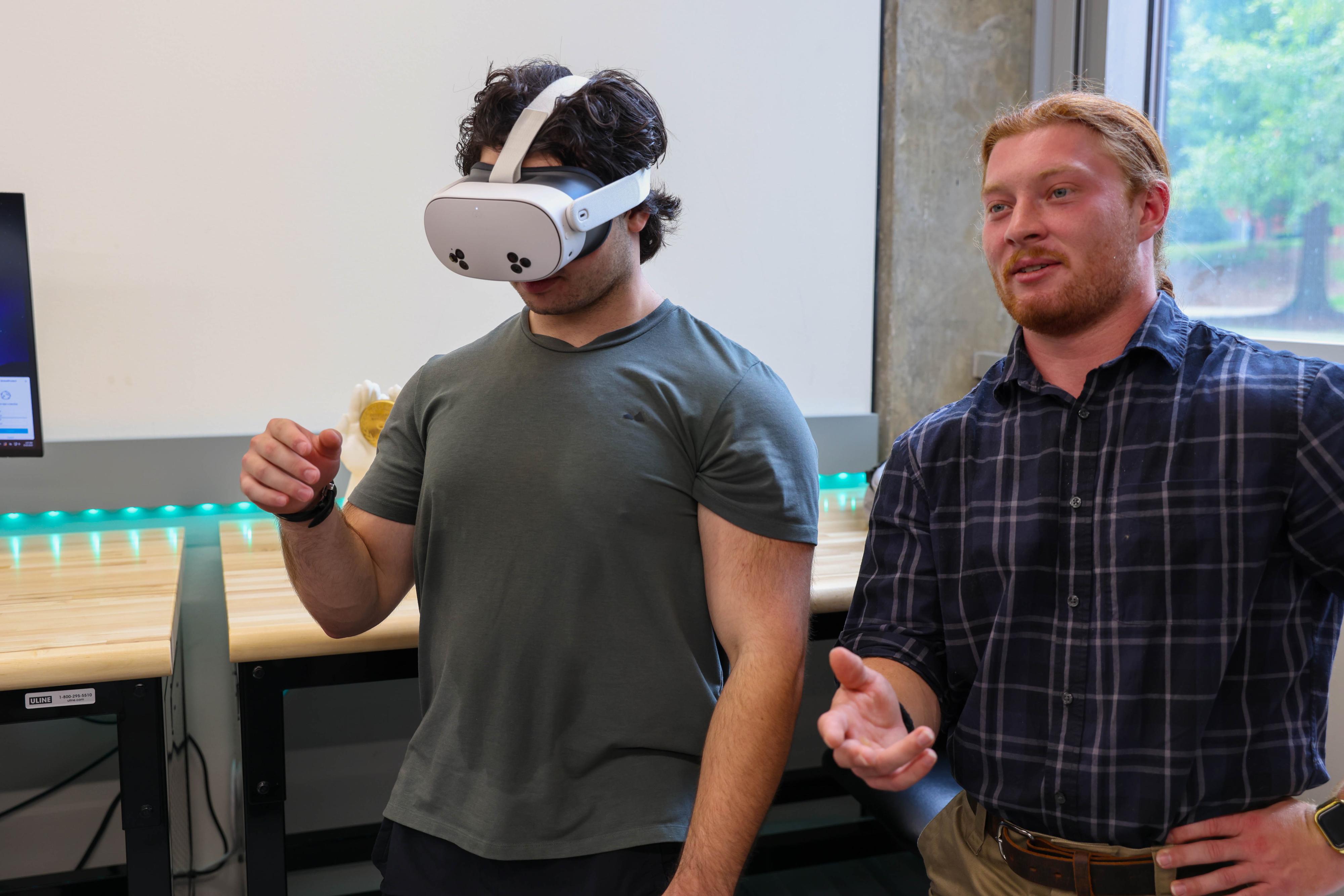
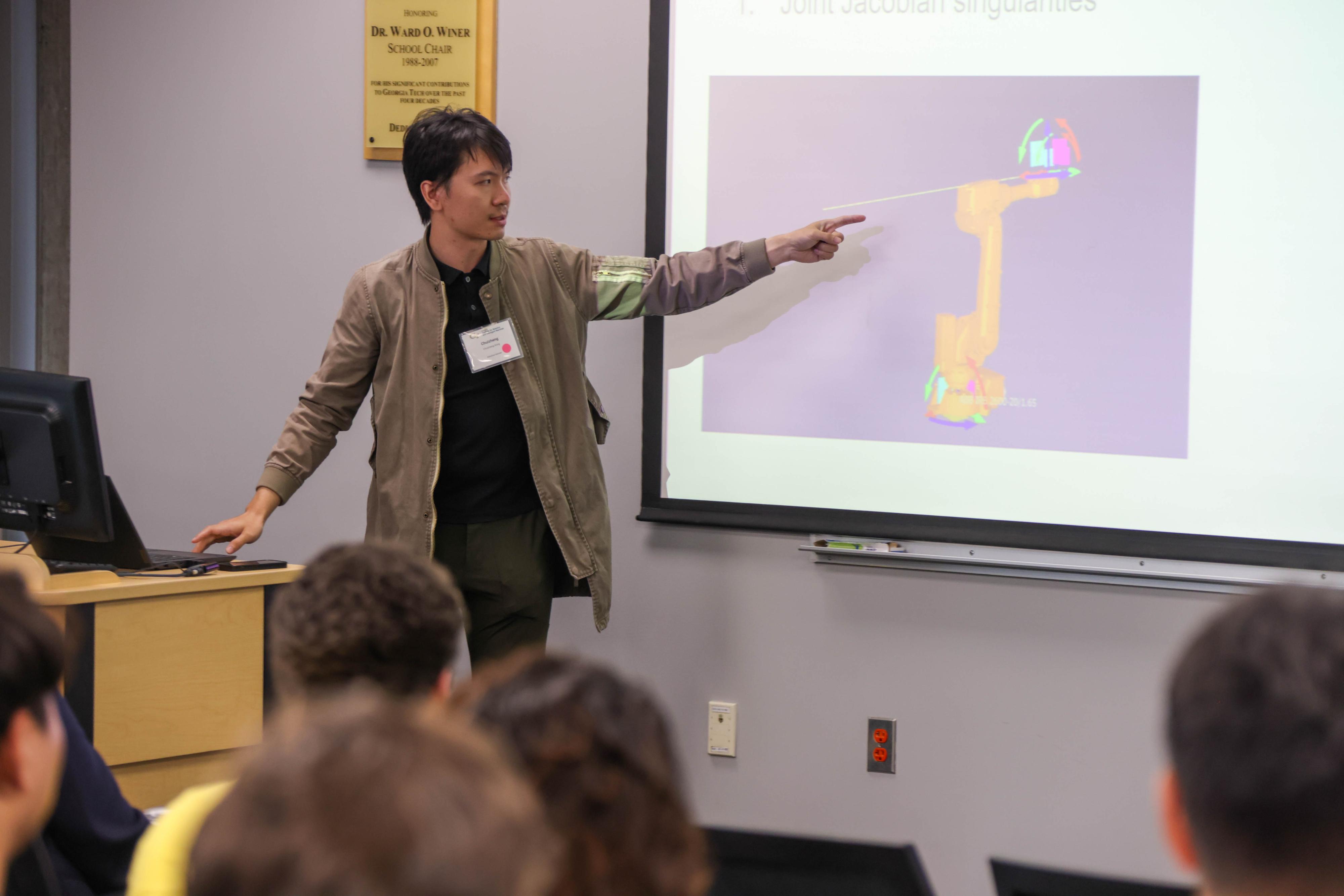
Along with the student presentations, Seepersad credited Associate Professor Mohsen Moghaddam; Amit Jariwala, director of design, innovation and experiential learning; and the Woodruff School IT team for their roles in establishing the new XR makerspace. Moghaddam, who teaches a class on XR, is helping train the next generation of engineers to integrate immersive technology into their work.
Reflecting on the event, Seepersad described the symposium as fun and eye-opening.
“It was really eye-opening to see how XR is already supporting research,” she said. “It’s the technology of the future, but it’s also something that can support research today in training, manufacturing automation, and even in physical therapy and robotics. There are lots of areas where these technologies are at the forefront because they provide a level of interaction that’s difficult to get any other way.”
The XR makerspace is at MRDC 3340 and is open Mondays, Wednesdays and Fridays from 1-3 p.m. and Tuesdays and Thursdays from 12-3 p.m.
